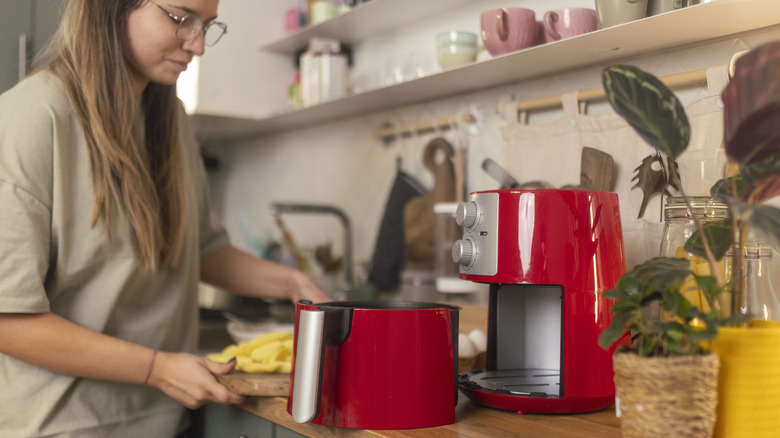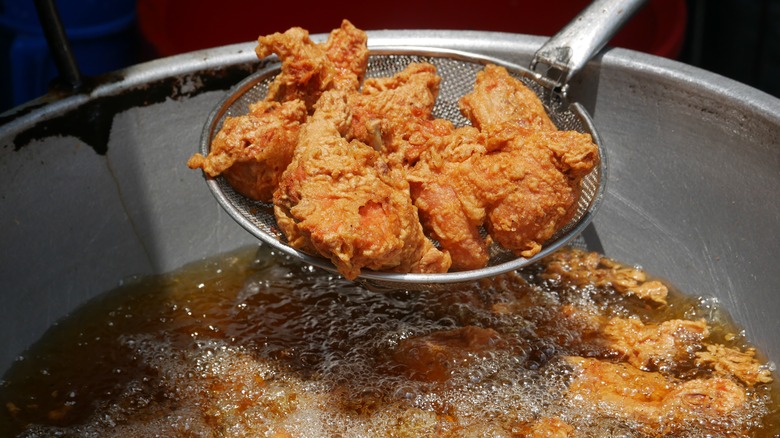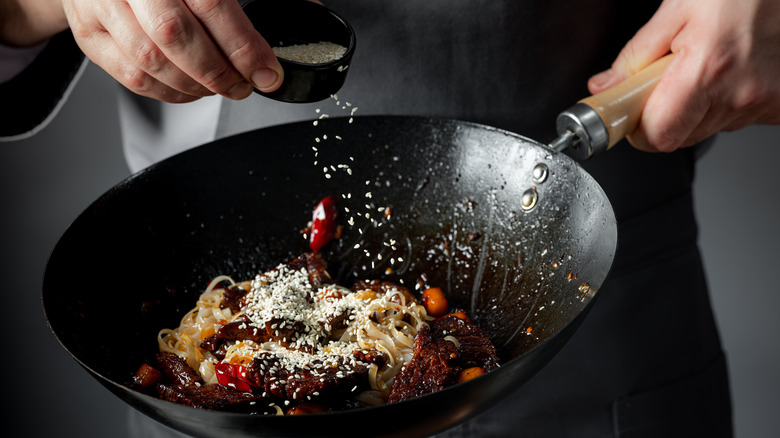No, Food Cooked In An Air Fryer Isn't Really Fried
Air fryers are a beloved appliance in the kitchen thanks to their convenience and versatility. These devices are suited to cooking a variety of foods, including items you never thought to put in an air fryer, such as grilled cheese, popcorn, and ravioli. However, the name of the appliance is misleading, as air fryers don't fry food in the conventional sense. Instead, these devices are more like convection ovens in how they function.
In addition to a heating element, air fryers also contain a fan. As heat is produced by the device, this fan disperses hot air around the food, which is held in a basket. Many people use oil when air frying food, but much less is required when compared to true frying methods. The texture of air-fried food is similar to that of other fried preparations, in that it's toothsome and crisp. However, methods like deep-frying or shallow-frying are much different when compared to how air fryers cook food.
How deep-frying works
Air fryers cook your favorite foods via heating coils and a fan, also called convection cooking. Conversely, deep-frying cooks foods by direct contact with hot oil. The oil needed for deep-frying usually ranges from 356 to 374 degrees Fahrenheit to ensure the ideal crispy texture. High oil temperature is also crucial for guaranteeing the item is completely cooked through to deep-fried perfection.
Scientifically speaking, deep-frying food does involve natural convection. However, it also uses conduction heating, which means that heat is transferred directly to food via the oil. Both convection and conduction are key to creating the ideal fried texture, as they convert any moisture within the food you're frying to steam. The evaporation of the internal moisture also prevents sogginess, as it stops the oil from being absorbed by the food. This process is key for achieving the firm outer texture and soft interior synonymous with tasty, deep-fried food. Along with deep-frying and air-frying, there are other frying methods you can use.
Pan-frying vs stir-frying
Also known as sautéing, the pan-frying method involves the use of fat or oil in a pan or skillet to cook food. Unlike deep-frying, sautéing uses much less oil. Pan-frying also works best with foods that don't require a ton of time to cook. This includes meats like steak, as well as certain veggies. Sautéing can also be combined with other cooking methods, such as braising, as it infuses the ingredients with immense flavor. Keep in mind that sautéing is not the same as simmering, as simmering uses liquid.
While similar to pan-frying, stir-frying does entail some key differences. Associated with various types of Asian cuisine, stir-frying traditionally calls for the use of a wok, which is a concave frying pan with high sides. The wok is key for dispersing heat uniformly throughout the ingredients you're cooking. Stir-frying also requires oil, specifically oil with a high smoke point to accommodate the high temperatures involved. A high smoke point will prevent oil from getting scorched when cooking, which can result in an unwanted flavor. Most home chefs use all sorts of frying techniques to ensure well-rounded, flavorful meals, including air frying.


